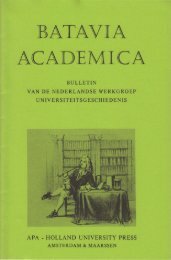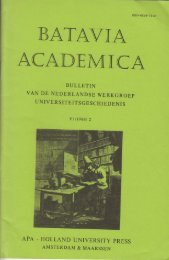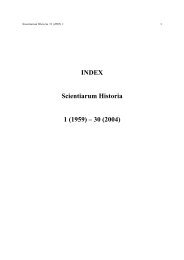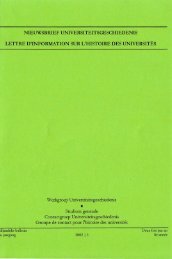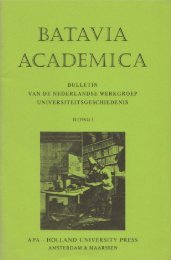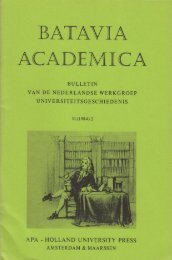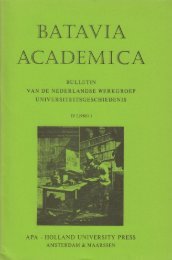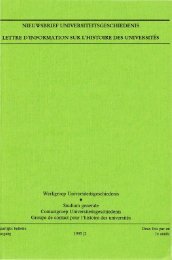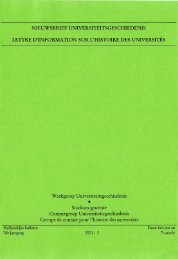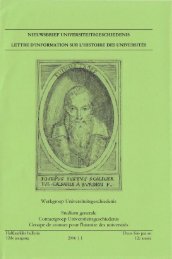the ocular harpsichord of louis-bertrand castel - Gewina
the ocular harpsichord of louis-bertrand castel - Gewina
the ocular harpsichord of louis-bertrand castel - Gewina
You also want an ePaper? Increase the reach of your titles
YUMPU automatically turns print PDFs into web optimized ePapers that Google loves.
Castel's <strong>ocular</strong> <strong>harpsichord</strong> 57<br />
spring, darkness, solitude, etc., and with <strong>the</strong> majority <strong>of</strong> objects? How is it possible that out <strong>of</strong><br />
three arts imitating nature, <strong>the</strong> most arbitrary and <strong>the</strong> least precise speaks <strong>the</strong> most forcefully<br />
to our soul?<br />
As a rare exception in eighteenth-century literary style, <strong>the</strong> question mark did<br />
not conclude a rhetorical question. One <strong>of</strong> his suggested answers clearly pointed<br />
to <strong>the</strong> later developments as described by Neubaucr and Barry: "Would it be<br />
that [music], by showing <strong>the</strong> objects to a lesser degree, leaves more room for<br />
our imagination ...?""^<br />
Pointing out <strong>the</strong> exceptional ability <strong>of</strong> music to touch <strong>the</strong> human soul became<br />
a frequently used argument against Castel's colour music after 1750. One <strong>of</strong> its<br />
critics who used this argument was Rousseau. We can infer from a small remark<br />
in one <strong>of</strong> Castel's books that Rousseau had visited his workshop in 1742 or 1743<br />
and apparently had seen music in <strong>the</strong> instrument."'' Never<strong>the</strong>less, in his Essai<br />
sur I'origine des langues Rousseau confirmed to have seen "this famous <strong>harpsichord</strong>,<br />
on which it is pretended a mu.sic <strong>of</strong> colours can be played", but in <strong>the</strong><br />
meantime he had developed many serious arguments again.st it, putting blatantly:<br />
There are no absurdities that physical observations have not given rise to considering <strong>the</strong> fine<br />
arts. In <strong>the</strong> analysis <strong>of</strong> sound <strong>the</strong> same relations have been discovered as were found by <strong>the</strong><br />
analysis <strong>of</strong> light. Immediately this analogy has been seized upon, completely disregarding<br />
experience and reason. The esprit de sysli'me has confounded everything, and as one did not<br />
know how to paint for <strong>the</strong> ears, one has taken it into its head to sing to <strong>the</strong> eyes.''''<br />
Rousseau not only called to mind <strong>the</strong> anatomical differences between eye and<br />
ear, but he pronounced <strong>the</strong> general difference between music and any art <strong>of</strong><br />
colour, which Castel had thought open to manipulation, to be <strong>of</strong> <strong>the</strong> essence <strong>of</strong><br />
All citations from Additions pour senir d'cclaircissement a quelques endroils de la Lettre sur<br />
les sourds et muets, in Diderot, Oemres completes, vol. 1, pp. 407^09: "ne flattcnt voire oreille que<br />
comme I'arc-en-ciel plait a vos yeux, d'un plaisir de sensation pur et simple"; "l.a peinture montre<br />
I'objet meme, la poesie le dccrit, la musique en excite a peine une idee; elle n'a de ressource que<br />
dans les intervalles et la duree des sons, lit quelle analogic y a-t-il entre cettc espece de crayons<br />
et le printemps, les tenebres, la solitude, etc., et la plupart des objets? Comment se fait-il done<br />
que des trois arts imitateurs de la nature, celui dont I'e.xprcssion est la plus arbitraire et la moins<br />
precise parle le plus fortement a I'ame? Serait-ce que, monlrant moins les objets, il laisse plus de<br />
carriere a notre imagination ...?"<br />
Castel, L'homme moral, p. 194, stating that "M. R[ousseau] ait cru autrefois voir de la<br />
Musique dans mon Clavessin oculaire."<br />
Rousseau, Essai, p. 169: "II n'y a sortes d'absurditcs auxquclles les observations physiques<br />
n'aient donne lieu dans la consideration des beaux-arts. On a trouve dans I'analyse du son les<br />
memes rapports que dans celle de la lumiere. Au.ssi-t6t on a saisi vivcmcnl cette analogic sans<br />
s'embarrasser de I'experience et de la raison. L'esprit de sisteme a tout confondu, et faute de<br />
savoir peindre aux oreilles on s'est avisc de chanter aux yeux. J'ai vii ce fameux clavecin sur lequel<br />
on pretendoit faire de la musique avec des couleurs". The &.«!/ was probably written between 1755<br />
and 1761, but only published in 1781, after Rousseau's death.



